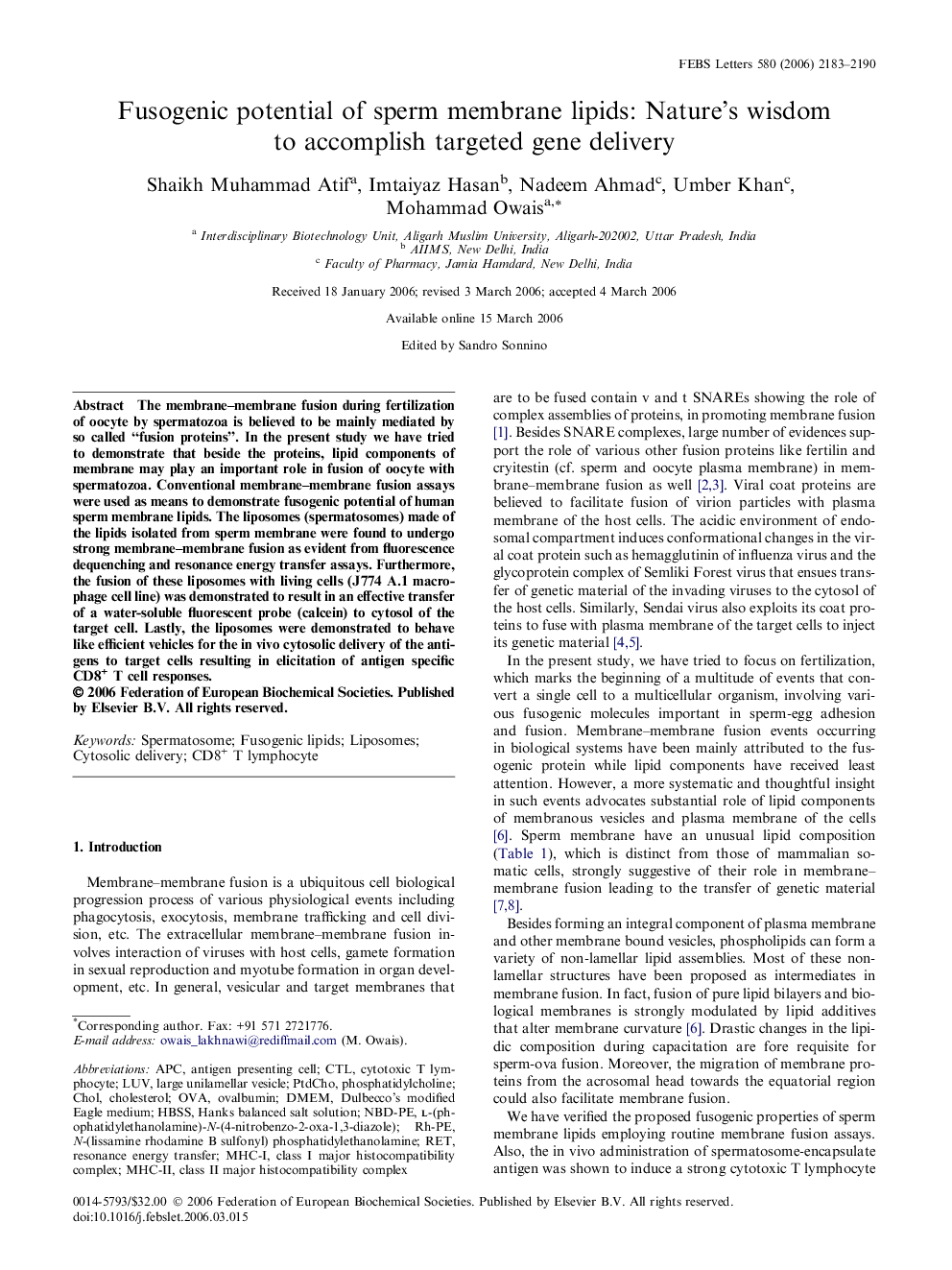| Article ID | Journal | Published Year | Pages | File Type |
|---|---|---|---|---|
| 2052919 | FEBS Letters | 2006 | 8 Pages |
The membrane–membrane fusion during fertilization of oocyte by spermatozoa is believed to be mainly mediated by so called “fusion proteins”. In the present study we have tried to demonstrate that beside the proteins, lipid components of membrane may play an important role in fusion of oocyte with spermatozoa. Conventional membrane–membrane fusion assays were used as means to demonstrate fusogenic potential of human sperm membrane lipids. The liposomes (spermatosomes) made of the lipids isolated from sperm membrane were found to undergo strong membrane–membrane fusion as evident from fluorescence dequenching and resonance energy transfer assays. Furthermore, the fusion of these liposomes with living cells (J774 A.1 macrophage cell line) was demonstrated to result in an effective transfer of a water-soluble fluorescent probe (calcein) to cytosol of the target cell. Lastly, the liposomes were demonstrated to behave like efficient vehicles for the in vivo cytosolic delivery of the antigens to target cells resulting in elicitation of antigen specific CD8+ T cell responses.
